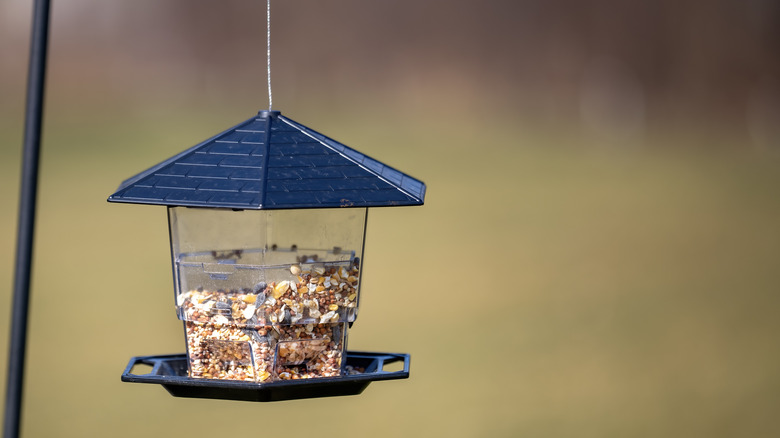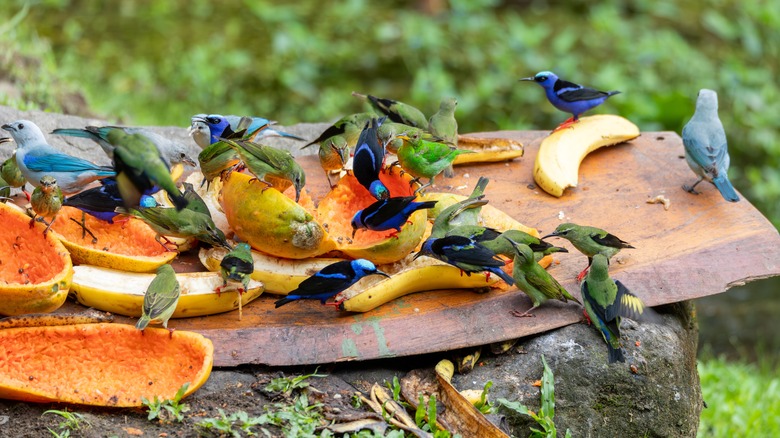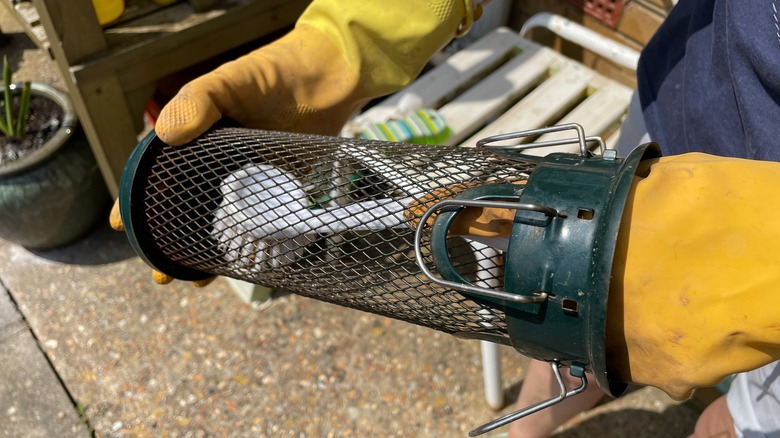What To Do If You Keep Finding Dead Birds Near Your Backyard Feeder
Imagine stepping into your backyard, ready to enjoy a peaceful day, perhaps with a cup of coffee in hand, only to find a dead bird — or worse, several — near your bird feeder. It's an unsettling sight, and many bird lovers have encountered it. While the occasional deceased bird is sadly part of nature, discovering multiple dead birds in a short period of time can signal a more significant issue at play.
Before jumping to conclusions or taking any action, it's important to assess the situation carefully. Take a moment to observe and determine how many birds you have found and what species they belong to. Check if there are any visible injuries or signs of illness on the birds' bodies. It's also helpful to note the time of day that you discovered the dead birds and if there are any other living birds in distress around your feeder.
If you discover only one dead bird on your lawn with no evident signs of injury or illness, it's likely an isolated incident and not a cause for concern. However, if you find multiple dead birds with similar injuries or symptoms, it may indicate a more significant issue that needs to be addressed promptly — commonly related to your bird feeder.
Why are birds dying around your bird feeder?
Bird feeders, while a joy for bird watchers, can unfortunately become hotspots for disease transmission. Five common diseases affecting feeder birds include salmonella, aspergillosis, avian pox, trichomoniasis, and finch disease (conjunctivitis), and each can have devastating effects, often leading to illness and death.
Salmonella, for example, causes severe gastrointestinal distress, resulting in lethargy and lack of appetite, ultimately leading to death if untreated. Aspergillosis is a fungal infection that primarily affects the respiratory system, causing difficulty in breathing and often proving fatal, particularly in weakened individuals. Meanwhile, avian pox manifests as wart-like lesions that can hinder a bird's ability to eat and fly, significantly decreasing its chances of survival.
Remember, these feeders are like social hubs for our feathered friends, and, like kids in school after a long summer break, that congregation can also lead to outbreaks. As soon as one bird has one of these diseases, it is highly likely to spread it to all the others eating from the same feeder.
How can you keep your bird feeder from killing birds?
If you've noticed a troubling number of dead birds near your feeder, it's time to take action and the best way to start is by properly cleaning your bird feeder. This can be done by removing your bird feeders and emptying birdbaths for seven to 10 days to disperse the birds and minimize disease transmission. Next, clean your feeders thoroughly with a 10% bleach solution, allowing them to dry completely before hanging them back up. Consider relocating them by about 10 feet to prevent food accumulation underneath — a small shift can make a big difference.
Another crucial thing to keep in mind is making sure the area under the feeders is clean. Mold grows on moist seeds and hulls, especially during warm months and even in winter — unseasonably warm spells can foster quick mold growth. Regularly rake up and dispose of seed buildups in sealed plastic bags. This maintenance helps avoid mold-related health issues for birds.
Next, choose feeders with adequate drainage, such as hopper-type or covered trays with screen bottoms. Avoid scattering seeds on the ground, particularly in wet weather, to prevent mold development. Finally, always handle dead birds with gloves or plastic bags and thoroughly wash your hands after contact. With these tips in mind, you'll be back to safely feeding the birds in your backyard in no time!


